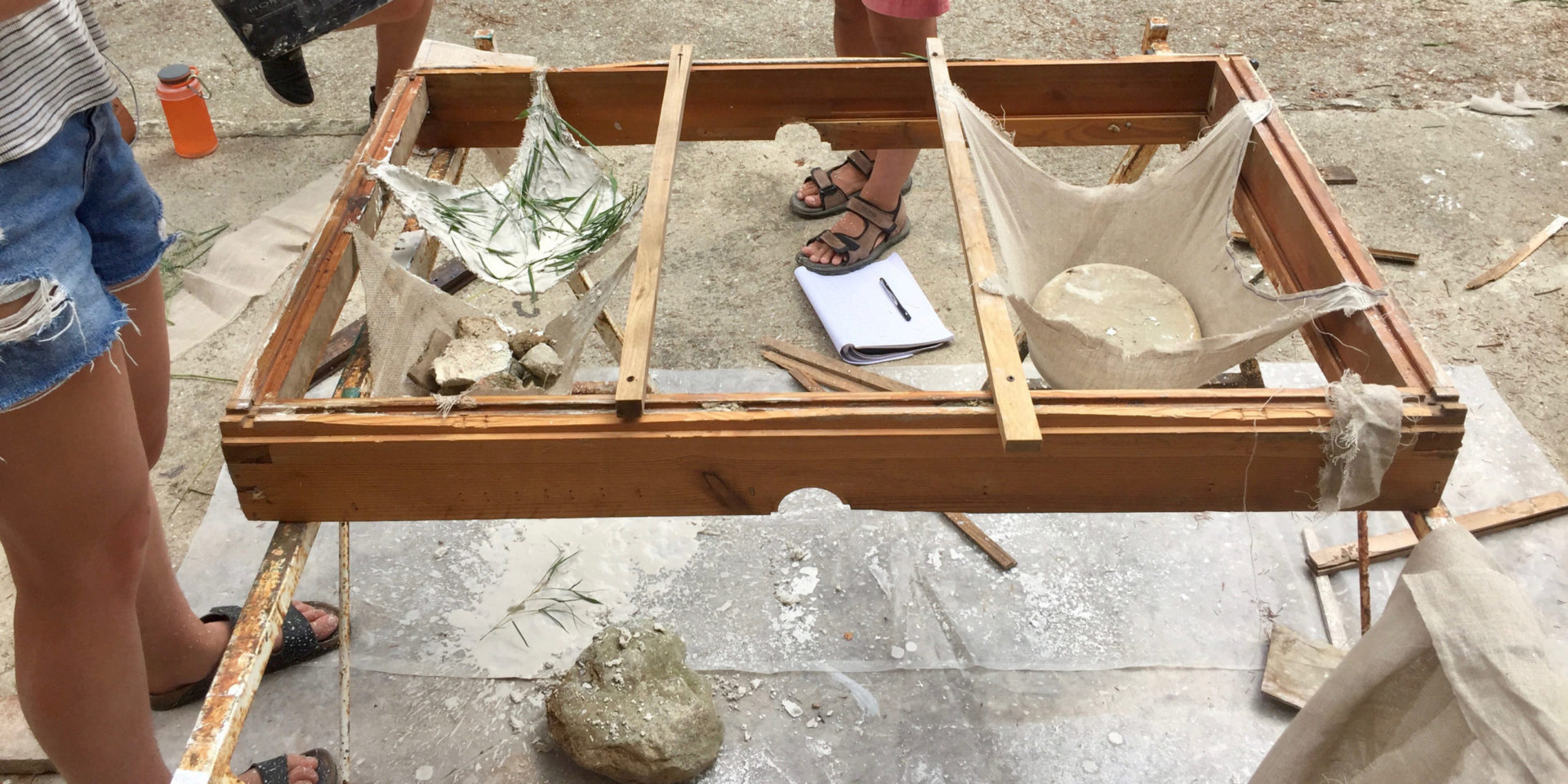Mechanics of Materials: Testing Compressive Strength of Concrete
By Rayna Higuchi ’20
Hi CEE! I’m Rayna, a student in the Mechanics and Materials track, blogging about my experiences in Course 1. Today I’ll be talking about the class Mechanics of Materials (1.035), taught by Professor Ulm, with additional instructors, Stephen Rudolph and Omar Al-Dajani.
A couple week ago, our class created several different mixes of concrete by varying the ratios of basic materials. The goal was to see how changing these proportions affect the strength of the concrete. The samples were placed in cylinders to set, them after a week were removed from the molds and covered in water to set for another week. From there, the ends were covered with Plaster of Paris, to even out the bumpy surface on the tops of the concrete so that the applied load is spread over the concrete’s surface more evenly.
During this entire 21-day process, our concrete samples were continually hardening. Past studies have shown that the ideal time to cure is 28 days. After this, the change in concrete strength is insignificant, because the amount of unreacted material is so small relative to the total volume of the concrete. Due to timing constraints, our samples were only able to cure for three weeks but that should still be more than enough to get an idea of their relative strengths.

Claire Holley (’21) and Luke Bastian (’21) measure the mass of a sample. The white coating on each end is the Plaster of Paris cap. Photo courtesy of Stephen Rudolph.
To test, we place an extensometer on each side of the sample. This helps us to measure the change in length of the sample as the material changes shape under pressure. In concrete, we do not expect a large change in length of our samples, because it is a very strong and very brittle material. Therefore we expect it to take a lot of weight, and then to shatter very suddenly with little warning. We loaded the specimens with a hydraulic press at a rate of 60kN/min, and measured the loading and displacement over time. These numbers, as well as measurements taken of the samples’ dimensions, will help us determine important material properties.

Claire Yost (’21, Course 3) and Foli Amaizo (’20) place an extensometer on their sample. Photo courtesy of Stephen Rudolph.

Sample Cylinder inside the hydraulic press pre-testing. The rubber bands connect to the extensometers on the sides. Photo courtesy of Stephen Rudolph.
My group had the sample with a higher water to cement ratio. We expect this sample to be weaker than the others: there is more available water than the given cement can withstand. Once all the cement is hydrated, going from the powder to what we think of as cement, the leftover water forms pores within the material. These pores decrease the strength. The results reflected this hypothesis, as every one of our samples was lower strength than that of the standard samples.
Labs like these are always interesting because they provide a very tactile method of learning. It’s one thing to know that there will be unreacted water in our concrete because I read it in a book. Opening the samples after we broke them and running our hands over the damp surfaces helped drive that point home more than any paper ever could. Next week, we’ll be designing our own sustainable concrete mixes, as we try to reduce the carbon footprint while increasing the strength. I’m looking forward to it!
CEE you next time!

One of the samples post-testing. Much of the larger aggregates, the gravel, have become dislodged from the cement. Photo courtesy of Stephen Rudolph.


